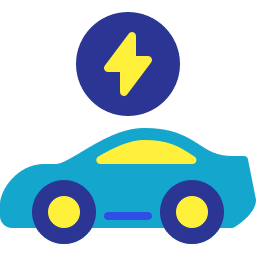How long would it take to drive to the moon, let’s find it. It depends on the distance and vehicle used. Driving to the moon and driving around the moon are addressed and solved differently due to distance and condition differences.
Would it ever be possible to build a road to the Moon? No, it is not possible, but traveling to Moon would be possible in the future, just like driving on a highway from one place to another. And it would be similar to air travel, and as previously, scientists utilized apollo mission vehicles to land on the surface of the Moon.

Nearly 6,000 miles, or one-fourth of the circle of the Earth, is the distance around the Moon. If a motorway or interstate highway were built around the Moon and you drove at 60 mph, it would take 100 hours to complete the journey. The gravity of the Moon is 1/6th that of the Earth, so you’d need to fine-tune your suspension to be able to go at that pace. Otherwise, your automobile would have difficulties keeping on the road.
Air splitters, diffusers, and spoilers cannot be used to increase downforce because there is no atmosphere. Let’s assume that you could only travel at a speed of roughly 25 mph on the highway. Two hundred forty hours, or (taking the rate equal to 1/6th the energy of 60mph).
However, there is also no highway. Only one vehicle has been created specifically for the Moon: the Apollo Lunar Buggy, also known as the Lunar Roving Vehicle. Even though the record speed was 18 km/h (11.2 mph), it was intended to reach 8 mph. 750 hours at the top rated speed, or 545 hours at full speed. However, they covered a total distance of 56 miles throughout the three most extended outings.
And they took 11 hours in total. It would take under 1,200 hours to round the Moon at the typical long-haul speed. Sadly, the LRVs’ range was limited to 57 miles, and their batteries could not be recharged. Therefore, within the first 11 hours or such, your battery would run out.

But suppose they had some solar energy panels and rechargeable batteries. We can increase the buggy’s range by around 25 kilometres per day if we cover it in solar panels. We’ll complete the Moon’s orbit in 240 days if we go 25 miles per day in less than eight months. In case of moving from earth to the moon, the distance is 238855 km, and at a speed of around 100 km per hour, it will take 239 hours. And at 200 km/hr the journey will further reduce to 120 hours approximately. But this is only possible in a parallel universe not in our universe.
According to another source: A spacecraft gets to the Moon in around 3 days. The distance between Earth and the Moon, or at least 240,000 miles (386,400 kilometers), is covered by a spaceship. The precise distance is determined by the precise route taken.
How long would it take to drive to the moon using Tesla Model S?
There is no aerodynamic drag on the moon since it lacks an atmosphere. The vehicle can only be used with self-contained power systems, like the Tesla Model S, due to the lack of a burnable atmosphere. With Tesla’s claimed top speed of 155 mph and battery recharge time, it would take less than 44 hours to complete a lunar orbit. However, the 250–315-mile range of the Model S on Earth is speed- and heat-limited. Uncertain how cooling down the batteries and electrics of a Tesla Model S on the moon would affect the vehicle’s top speed and range.

Battery recharge times range from 76.75 to 96.7 hours @ 110 Volts, depending on charger voltage. 1.33 hours at 440 Volts and 8.5 to 10.72 hours at 220 Volts. Elon Musk will undoubtedly set up Superchargers at the appropriate intervals.
How AI can help reach Moon
AI developments have enabled us to advance in a wide range of fields, which are not just confined to uses on this planet. Here are some ways artificial intelligence can assist us in expanding our space exploration, from planning missions to cleaning up the debris in Earth’s orbit. AI has aided astronaut aides in mission planning and design, processing satellite data, processing and calculating space debris, and navigation systems.


